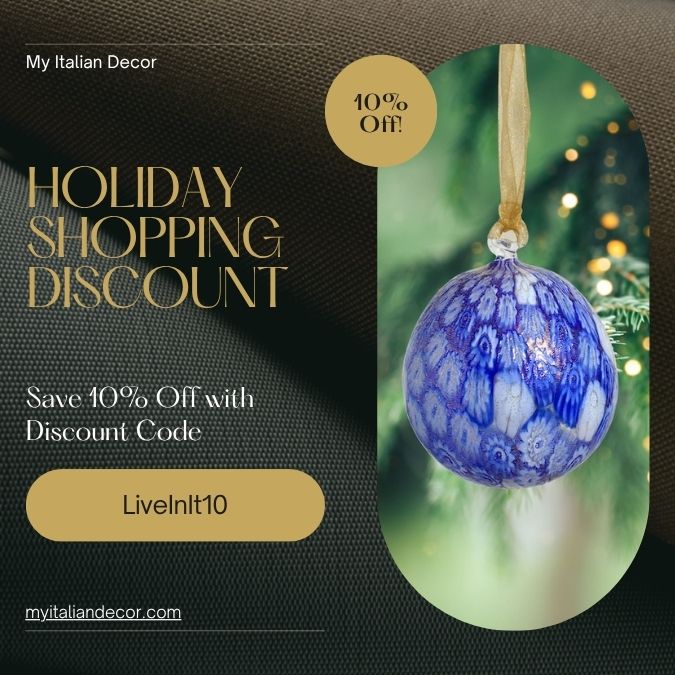Rooted in respect, nourished by nature, and guided by generations of Barolo wisdom.
In the rolling hills of Piemonte’s Langhe region, where vineyards climb sun-drenched slopes and fog softens the valley light, the story of Sara Vezza of Josetta Saffirio unfolds. A fifth-generation winemaker and CEO, Sara continues her family’s legacy with devotion and purpose. She blends heritage and innovation to craft expressive Barolo wines that speak of place, patience, and authenticity.
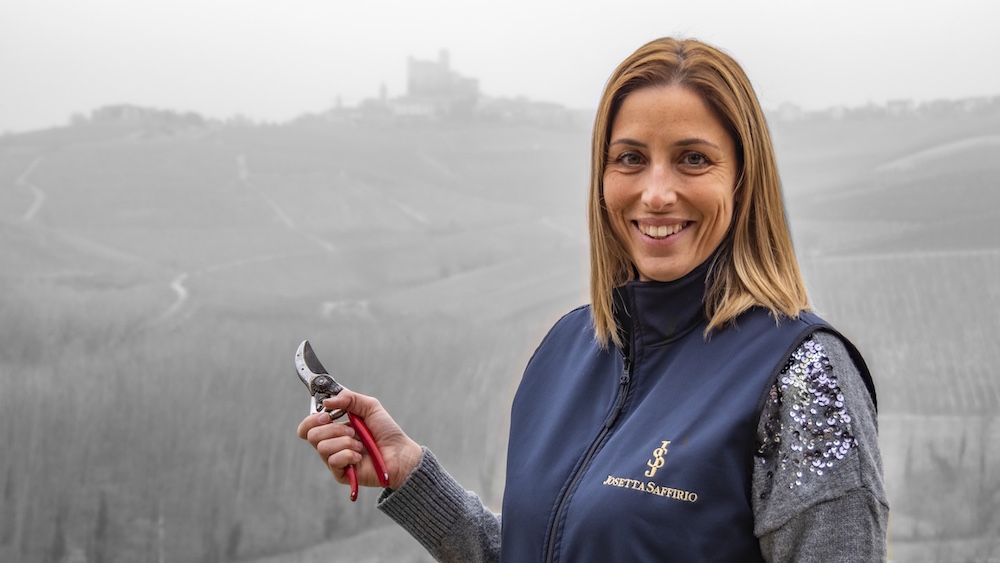
This Italy Answered feature, part of Live in Italy Magazine’s Wine Guide 2025, invites readers to experience Italy through its wines and the people who make them. Through Sara’s story, we learn that sustainability is not a marketing trend—it is a way of life.
A Heritage Rooted in the Langhe
Tell us about your background and how Josetta Saffirio began.
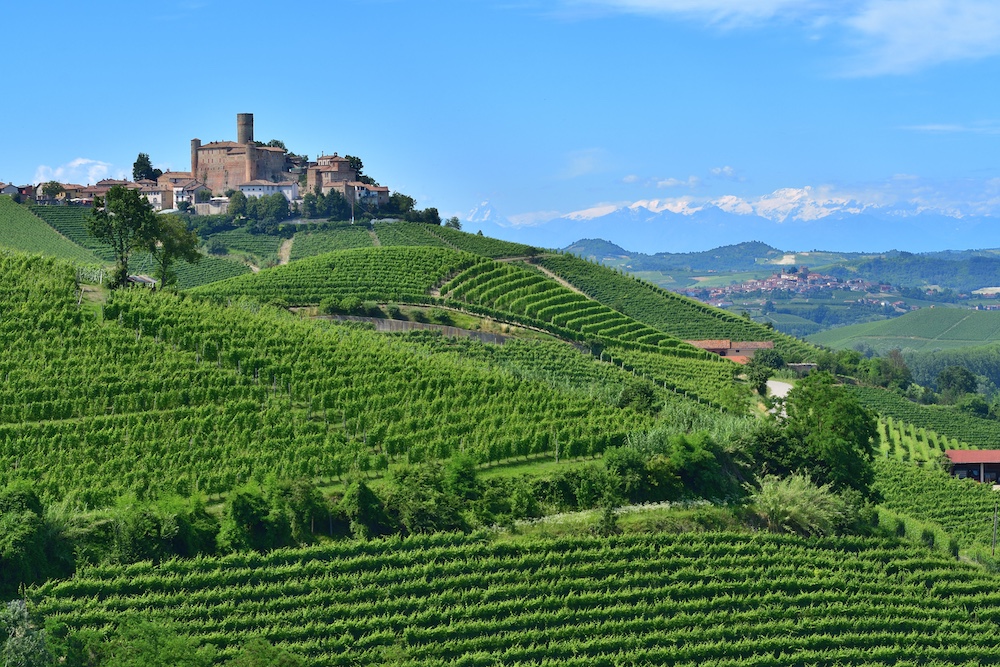
I’m the fifth generation of my family to farm and make wine at Josetta Saffirio, a small estate in Piemonte’s Langhe region—famous for Barolo, one of the world’s great wines. The story began with my great-great-grandfather, who left a mountain village to build a farm for his family.
My grandfather Ernesto, born in 1910, is the real hero of our story. He began working at eight because his father was fighting in the First World War, and later became a soldier himself. Despite hardship, he studied on his own and earned his degrees. That determination still inspires me.
After the war, he became an executive in Cuneo but bought back the family land to preserve our heritage. My mother, Josetta, was his only child. She became both grower and winemaker—a pioneer. When my parents considered selling, I couldn’t let go of all that history. I decided to make wine myself. I learned everything through experience, by observing and working every day among the vines.
Seasons of Labor and Reward
Winemaking seems glamorous, yet it’s demanding work. What is a typical year like in the vineyard?
It’s very seasonal. In winter, we prune vines in the snow. In summer, we work in the heat—sometimes forty degrees Celsius. Bringing the harvest home after a long season is incredibly rewarding.

From March to October, everything grows at once. There is always something to manage. We’re not a big estate, but large enough to need employees, and coordinating people and production keeps me busy year-round. My father still helps every day. With more than fifty harvests behind him, his experience is invaluable.
Sustainability as a Way of Life
Sustainability is central to your philosophy. What does it mean to you?
Sustainability has always been part of who we are—not a strategy, but a way of living. We see the vineyard as part of a larger ecosystem that must be protected, not exploited.
Half of our estate is dedicated to woods and permanent fields instead of vines. We planted truffle trees and created a natural observatory where wild orchids bloom each year. This balance encourages biodiversity, stabilizes soil, and keeps the landscape resilient.
Every decision—from vineyard management to energy use—follows the belief that true quality comes from harmony between people and the environment. It’s a long-term vision. What we do today is for the next generation.
Respect for Nature in Every Detail
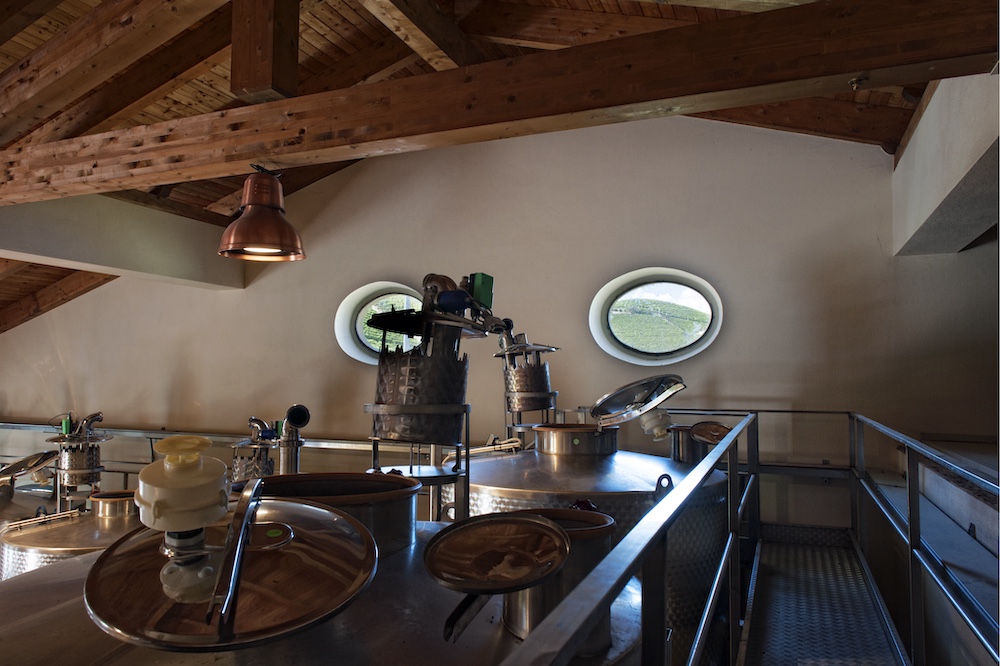
Even your cellar design reflects that philosophy.
Yes. We use solar panels to reduce energy consumption, and our building follows the natural rhythm of the wine’s life. The production areas are mostly underground, minimizing visual impact and blending into the hills. Sometimes new cellars look too modern—it’s a pity. Architecture should express love and respect for the landscape.
The Art and Science of Winemaking
You describe winemaking as both art and science. How do you define that balance?
Winemaking is interpretation—a dialogue with nature. It’s not pure science or pure art. I learned through practice, not theory, and I listen to what the vines tell me.
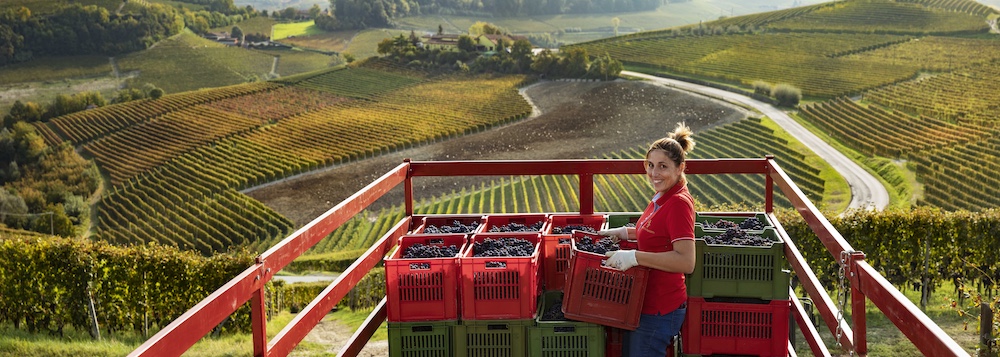
I don’t feel like the owner of the vineyard but part of it. My role is to guide, not control. The highest form of love is respect—for the land, for nature, for life itself.
The Legacy of Barolo 1948
Tell us about your Barolo Riserva “1948.” What makes it special?
It comes from a vineyard my grandfather planted after the Second World War, and about eighty percent of those vines are still alive. It’s our most precious site—the beginning of everything. “1948” is produced only in the best vintages, using Nebbiolo grapes. It represents the soul of our estate.
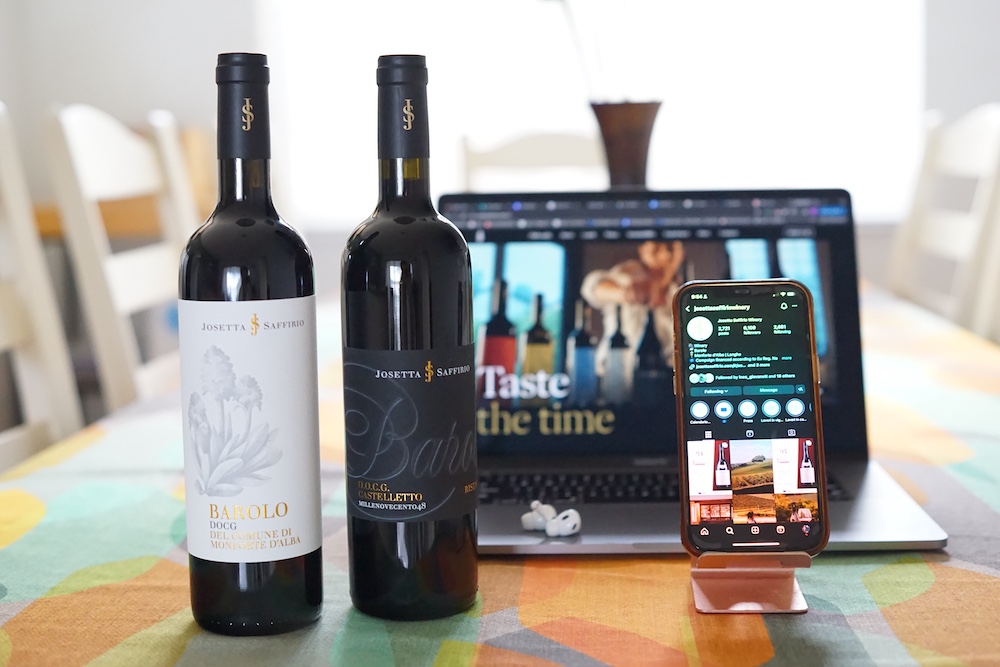
Balancing Family and Leadership
You’re also a mother of four. How do you balance motherhood and leadership?
I have four children, all born within five years. Balancing family and work is one of the hardest challenges, but I chose both. Women shouldn’t have to decide between motherhood and career.
It’s hard, but with help—from partners, grandparents, and colleagues—it’s possible. My children remind me why I work for sustainability. What we do today shapes their tomorrow. When they miss me while I’m traveling, I tell them it’s better to have a happy mother who loves her work than one who gave up her dreams.
Women in the Wine World
As a woman in the Italian wine industry, how have things changed since you began?
When I started twenty years ago, it was rare to see women working in the vineyards or cellars. At that time, many people couldn’t believe a woman could manage the same hard work as a man. That was very frustrating.
I worked long hours in the fields and in the cellar—driving tractors, harvesting grapes, and managing production. Yet I was often met with doubt. People looked at me and thought I couldn’t handle the tough parts of the job.
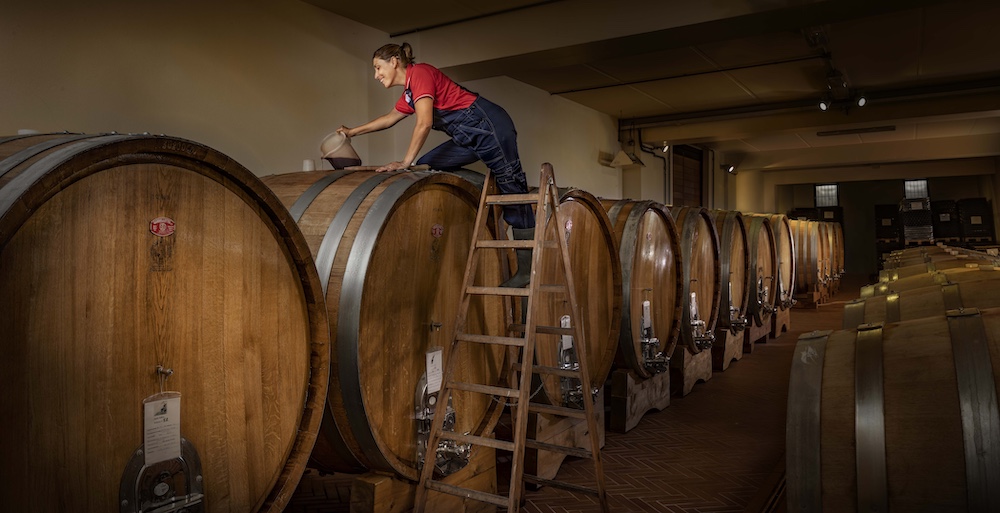
It made me feel disappointed and sad because I shouldn’t have to prove my strength to anyone. I am who I am, and my work speaks for itself. Over time, more women have entered the wine world, and things are changing. Still, I lead by example. I work beside my team and show them that with belief, passion, and dedication, anything is possible.
A New Generation of Wine Drinkers
You’ve mentioned that younger generations drink less wine. How do you see this shift?
In Italy, wine is part of our culture. My husband and I share a glass with dinner, and our children grow up seeing that wine belongs at the table. Globally, young people drink less, but they care more about quality, authenticity, transparency, and values.
That change is an opportunity. They want to understand what’s in the glass—where it comes from, how it’s made, and who stands behind it. They value honesty and connection over excess. Behind each bottle are families, ecosystems, and meaningful choices.
This is why I invite people to visit the winery, meet us, and listen to our story. For me, that’s the new luxury—authentic connection and shared experience.
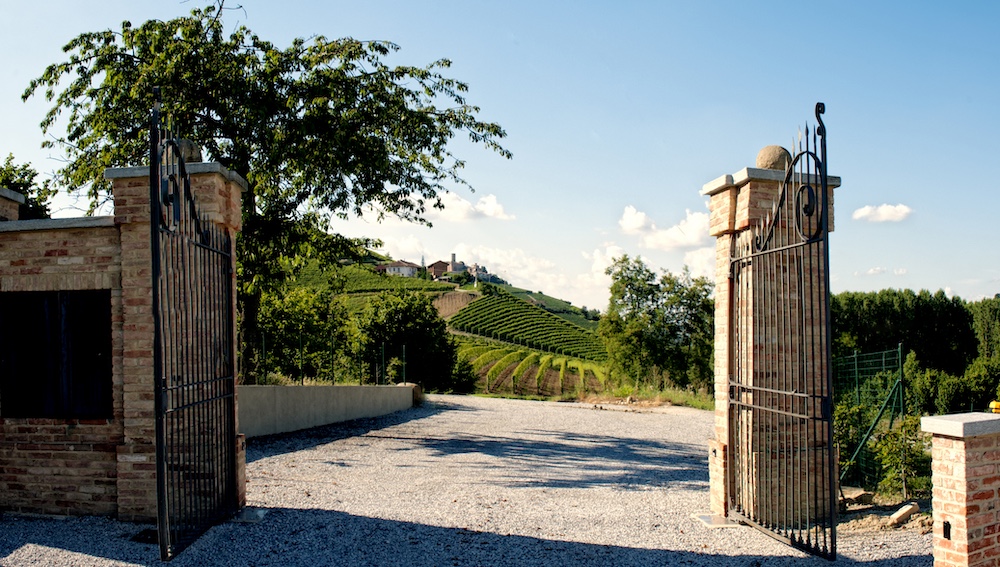
An Invitation to the Langhe
For travelers visiting Piemonte, what can they expect at Josetta Saffirio?
We’re about two hours from Milan, in a UNESCO World Heritage landscape of vineyards and medieval castles. Visitors walk among the vines, meet our team, and taste wines in a personal, authentic way.
We host around two thousand guests each year, and we care for every one of them. Tastings are immersive and relaxed—an invitation to slow down and feel the rhythm of Barolo country.
Wine and Food in Harmony
What local dishes would you pair with your wines?
That’s difficult! I love carne cruda with white truffle, tajarin pasta made with egg yolks, and ravioli del plin. In winter, bagna cauda—a warm sauce of garlic, anchovies, and olive oil—is perfect. In summer, carpione, a sweet-and-sour dish with zucchini and eggs. Piemonte’s cuisine is seasonal and soulful; it always finds harmony with Barolo.
Where Wine, Land, and Legacy Converge
Sara Vezza embodies a timeless truth: that the art of winemaking is an act of love, patience, and deep respect. Her family estate, Josetta Saffirio, stands as a living example of how sustainability and craftsmanship can coexist in harmony.
As expressed on the winery’s website, “By caring for the earth and its fruits, we are granted access to a renewed dimension of scents and flavours, in the most authentic and unique way possible.” For Sara, investing in sustainability means strengthening ecosystems, preserving natural resources, and nurturing well-being—knowing that today’s choices shape tomorrow’s world.
Through her work, Sara ensures that the Langhe’s spirit endures—not only in every glass of Barolo but also in the values she passes to her children and to future generations. Her story reminds us that sustainable travel and wine are not separate pursuits but interwoven experiences—each deepening our understanding of Italy’s landscapes, traditions, and people.
Visit Josetta Saffirio. | @josettasaffiriowines
Discover more: Explore Josetta Saffirio and other featured wineries in the Wine Guide 2025.


